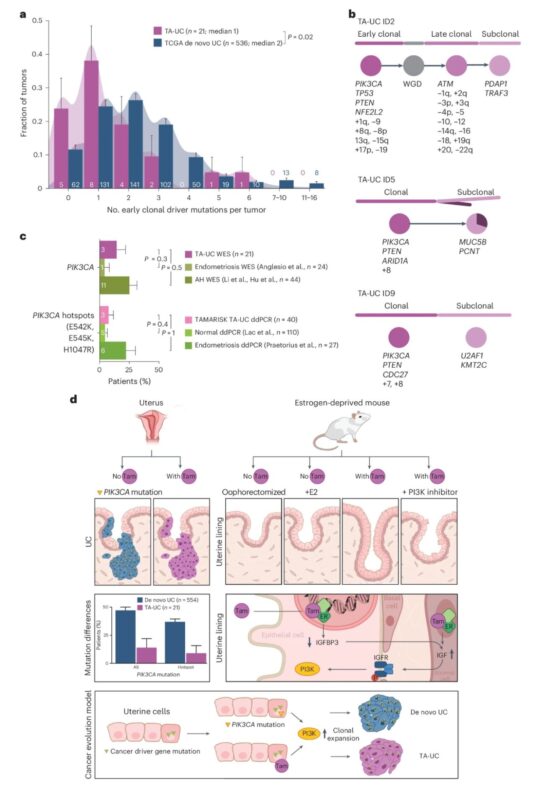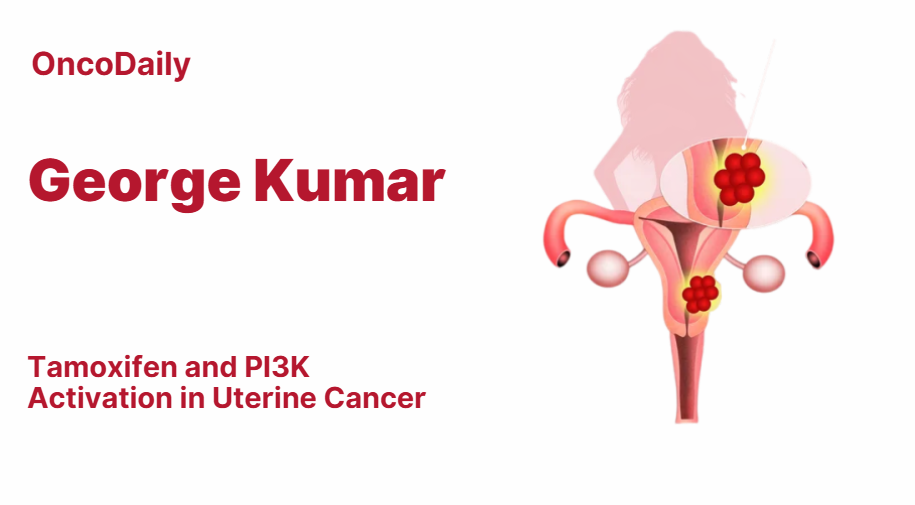George Kumar, Senior Director at AstraZeneca, shared on LinkedIn:
“Tamoxifen induces PI3K activation in uterine cancer (in mice)
Tamoxifen therapy, used in cancer treatment, is linked to rare but well-documented secondary uterine cancers. Unlike spontaneous uterine cancers, where oncogenic PIK3CA mutations are common, these mutations are less frequent in tamoxifen-associated tumors.
Research shows that tamoxifen activates phosphoinositide 3-kinase (PI3K) signaling in normal mouse uterine tissue, suggesting that this activation acts as a non-genetic driver event in tumorigenesis. This reduces the selective advantage of PI3K-activating mutations in tamoxifen-related uterine cancer.
The findings propose a unique pathway where tamoxifen-induced PI3K signaling contributes to a multistep model of uterine carcinogenesis. This concept of treatment-induced signaling as a driver may apply to other forms of therapy-related cancers.
Broader Implications:
- This mechanism highlights a novel paradigm where a drug (tamoxifen) activates an oncogenic pathway (PI3K) typically driven by mutations, contributing to a multistep model of carcinogenesis. This may apply to other therapy-associated cancers where treatments alter signaling pathways without causing mutations.
- The study suggests potential preventive strategies, such as using PI3K inhibitors like alpelisib or metformin, which reduced tamoxifen-induced proliferation in preclinical models and clinical trials, respectively.
In essence, tamoxifen’s ability to activate PI3K signaling in the uterus through ER and IGF1R crosstalk creates a tumor-promoting environment, mimicking the effects of PIK3CA mutations and reducing their frequency in TA-UC.
This non-genetic driver mechanism explains how tamoxifen increases UC risk without directly causing mutations, offering insights into therapy-associated carcinogenesis and potential interventions.
Figure Courtesy: Nature Genetics”

More posts featuring George Kumar.
